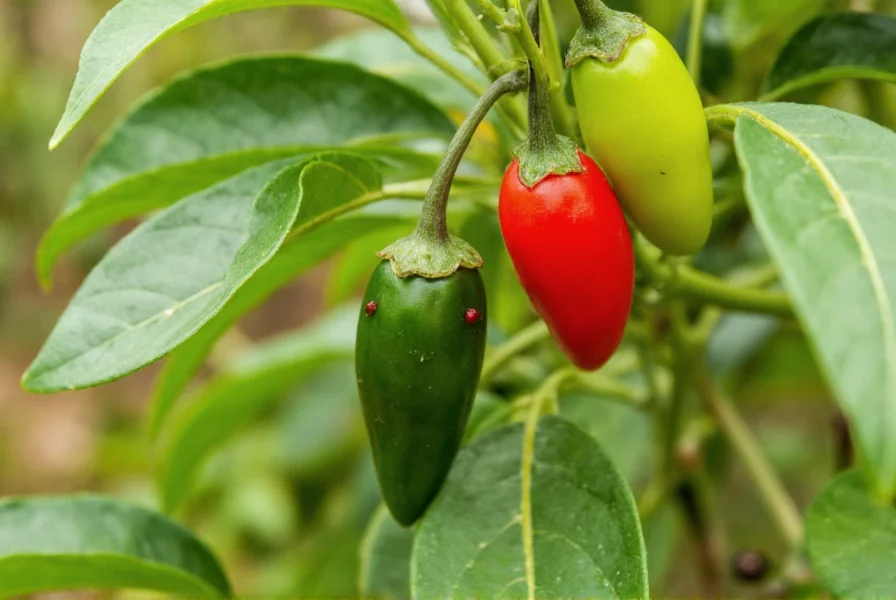When searching for "Kenyan pepper," many consumers encounter confusion due to inconsistent labeling and marketing practices. Unlike established pepper varieties from specific regions like Jamaican Scotch Bonnet or Thai Bird's Eye, Kenya doesn't have a signature pepper recognized in global spice trade. However, the East African nation does cultivate several chili varieties that contribute to its vibrant culinary landscape.
Understanding Pepper Production in Kenya
Kenya's tropical climate supports the growth of various chili peppers, particularly the African bird's eye chili (Capsicum frutescens), known locally as pili pili or mchuzi. These small, tapering peppers typically measure 1-2 inches long and range from bright red to green when unripe. While often marketed internationally as "Kenyan pepper," this terminology creates confusion with true black pepper (Piper nigrum), which Kenya produces in negligible quantities.

Key Characteristics of Kenyan-Grown Peppers
The predominant chili variety grown in Kenya shares characteristics with other African bird's eye chilies:
| Characteristic | Details |
|---|---|
| Heat Level (Scoville) | 100,000-175,000 SHU (comparable to habanero) |
| Flavor Profile | Grassy, citrusy notes with intense heat |
| Common Names | Piri piri, African bird's eye, peri peri |
| Primary Growing Regions | Coastal areas, Western Kenya, Rift Valley |
Kenyan Pepper in Culinary Applications
Chefs and home cooks in Kenya incorporate these fiery chilies into numerous traditional dishes. The peppers feature prominently in:
- Stews and sauces - Finely chopped or pureed into tomato-based sauces
- Seafood preparations - Particularly along the coast where fish dishes dominate
- Chutneys and relishes - Combined with mango, pineapple, or tomatoes
- Spice blends - Mixed with other local spices like cardamom and cloves
Unlike the slow-building heat of some Asian chilies, Kenyan-grown bird's eye varieties deliver an immediate, intense burn that dissipates relatively quickly. This characteristic makes them ideal for dishes where pronounced heat is desired without overwhelming lingering spiciness.
Commercial Production and Export
While Kenya isn't among the world's top pepper producers, the country has developed niche markets for its chili products. Small-scale farmers primarily grow these peppers, with increasing interest in value-added products:
- Fresh peppers sold in local markets
- Dried whole peppers for extended shelf life
- Piri piri sauces and spice blends
- Infused oils and vinegars
Export markets for authentic Kenyan-grown peppers remain limited compared to established spice exporters. Consumers seeking genuine Kenyan pepper products should look for specific origin labeling and be wary of generic "African pepper" claims that may not indicate actual Kenyan origin.
Identifying Authentic Kenyan Pepper Products
Due to inconsistent labeling practices, identifying truly Kenyan-sourced peppers requires attention to detail:
- Look for specific farm or cooperative names rather than generic country references
- Check for third-party certifications that verify origin
- Authentic Kenyan bird's eye chilies should have a distinctive tapered shape and thin walls
- Be skeptical of products claiming "Kenyan black pepper" as commercial black pepper production in Kenya is minimal

Common Misconceptions About Kenyan Pepper
Several misconceptions persist about Kenyan pepper in international markets:
- Myth: Kenya produces significant quantities of black pepper
Reality: Kenya's black pepper production is minimal compared to major producers like Vietnam, Indonesia, and Brazil - Myth: "Kenyan pepper" refers to a specific, standardized variety
Reality: The term is often used generically for various African bird's eye chilies regardless of actual origin - Myth: Kenyan peppers are consistently hotter than other African varieties
Reality: Heat levels vary significantly based on growing conditions, not country of origin alone
Where to Find Genuine Kenyan Pepper Products
Locating authentic Kenyan pepper products requires some research:
- In Kenya: Local markets like Nairobi's City Market or Mombasa's Old Town markets
- International specialty stores: Look for African or East African specialty food retailers
- Online retailers: Some ethical importers specializing in African products
- Farmers' cooperatives: Direct-from-farmer options through fair trade organizations
When purchasing online, check for detailed origin information rather than generic country references. Products specifying particular regions within Kenya (like coastal areas or Western Kenya) are more likely to be authentic.
Frequently Asked Questions
Is Kenyan pepper the same as African bird's eye chili?
Yes, what's commonly marketed as 'Kenyan pepper' typically refers to African bird's eye chili (Capsicum frutescens), known locally as piri piri or mchuzi. Kenya doesn't have a unique pepper variety recognized in global spice trade, but grows these small, intensely hot chilies.
How hot are Kenyan-grown peppers on the Scoville scale?
Kenyan-grown African bird's eye chilies typically measure between 100,000-175,000 Scoville Heat Units (SHU), comparable to habanero peppers. Heat levels can vary based on growing conditions, with coastal regions often producing slightly milder varieties than highland areas.
Does Kenya produce black pepper commercially?
Kenya has minimal commercial black pepper (Piper nigrum) production. While some small-scale cultivation exists, it's not significant compared to major producers like Vietnam, Indonesia, or Brazil. Most 'Kenyan pepper' references actually indicate chili peppers, not true black pepper.
What are traditional uses of Kenyan peppers in local cuisine?
In Kenyan cuisine, bird's eye chilies are used in stews, seafood preparations (especially along the coast), chutneys, and spice blends. They're often finely chopped or pureed into tomato-based sauces. Unlike some Asian chilies, Kenyan varieties deliver immediate intense heat that dissipates relatively quickly, making them ideal for dishes requiring pronounced but not lingering spiciness.
How can I verify if pepper products are genuinely from Kenya?
To verify authentic Kenyan pepper products, look for specific farm or cooperative names rather than generic country references, check for third-party certifications verifying origin, and examine the physical characteristics (tapered shape, thin walls). Be skeptical of products claiming 'Kenyan black pepper' as commercial black pepper production in Kenya is minimal. Products specifying particular Kenyan regions are more likely to be authentic.











 浙公网安备
33010002000092号
浙公网安备
33010002000092号 浙B2-20120091-4
浙B2-20120091-4